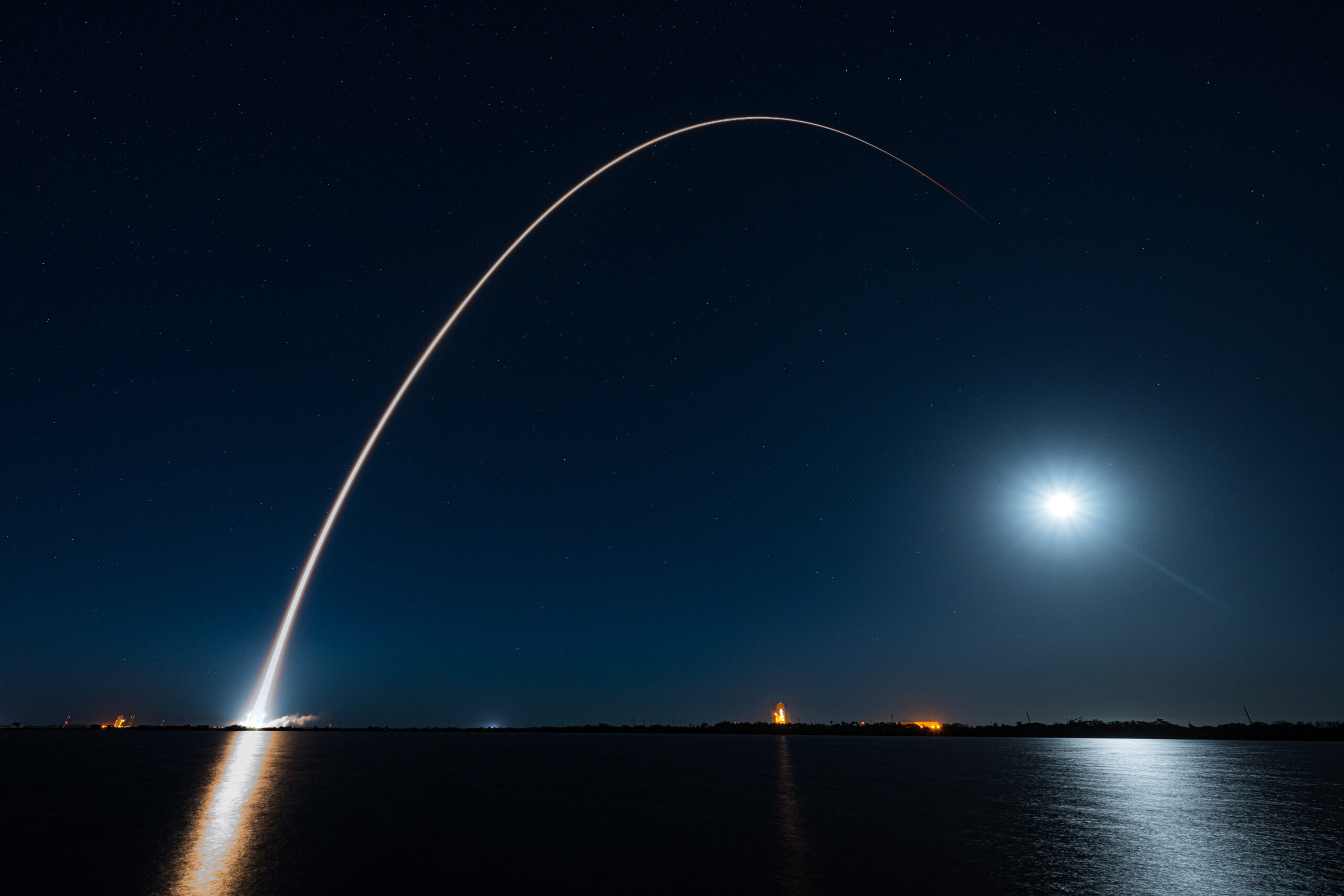TAMPA, Fla. — SpaceX successfully launched the Amazonas Nexus telecoms satellite Feb. 6, which will fuel Spanish operator Hispasat’s Americas expansion while carrying a payload for the U.S. Space Force.
Amazonas Nexus lifted off on a Falcon 9 at 8:32 p.m. Eastern from Cape Canaveral Space Force Station, Florida, after being delayed a day because of poor weather conditions.
The satellite separated from the rocket about 36 minutes later to begin its journey to geostationary orbit over the next few months using onboard electric propulsion.
Signal acquisition was successfully achieved at 9.26 p.m. Eastern, according to Hispasat spokesperson Víctor Inchausti.
Just over eight minutes after lift-off, the Falcon 9’s first stage landed on a droneship in the Atlantic Ocean for reuse.
SpaceX had previously used the booster to launch the SES-22 broadcast satellite, a lunar lander for ispace, and three Starlink broadband missions.
It marked SpaceX’s 170th landing of an orbital class rocket, including Falcon 9 and Falcon Heavy missions.
Amazonas Nexus is due to replace and expand the capacity of Hispasat’s Amazonas 2 satellite at 61 degrees west, covering the Americas, Greenland, and North Atlantic transportation routes.
Built by Europe’s Thales Alenia Space, Amazonas Nexus is designed to primarily provide high-throughput Ku-band capacity to Hispasat’s aviation, maritime, and rural broadband customers. The 4,500-kilogram satellite uses Ka-band feeder links for telemetry and control.
Also onboard is a high-bandwidth protected communications transponder for the Space Force called Pathfinder 2.
The hosted payload is the third Pathfinder mission designed to use existing commercial technologies to provide wideband alternatives for the Space Force’s satellite communications needs.
Hispasat, Thales, communications provider Hunter Communications, and secure network systems integrator Airtel — which led the project — secured a contract for the payload in 2020.
Charlotte Gerhart, chief of Tactical SATCOM Acquisition Delta at Space Systems Command, the Space Force body overseeing the procurement of new technology, said the mission demonstrates a “high degree of partnership between military and commercial” acquisition.
“Pathfinder 2 satisfies warfighter requirements by procuring commercially provided pre-launch transponders and securing bandwidth at a lower total ownership cost,” Gerhart said in a statement.
Hispasat is also looking to use Amazonas Nexus to expand its presence in sustainability projects after investing in Spain’s largest reforestation project.
